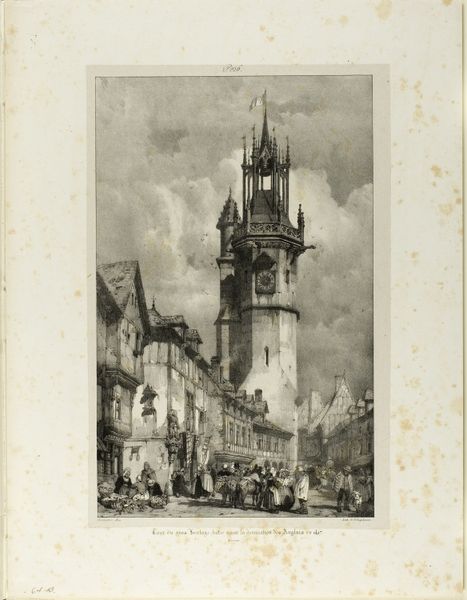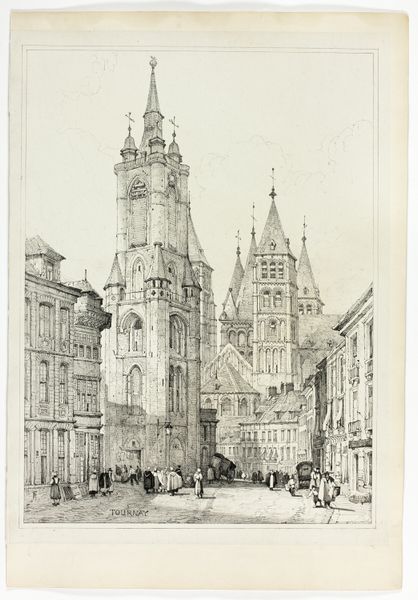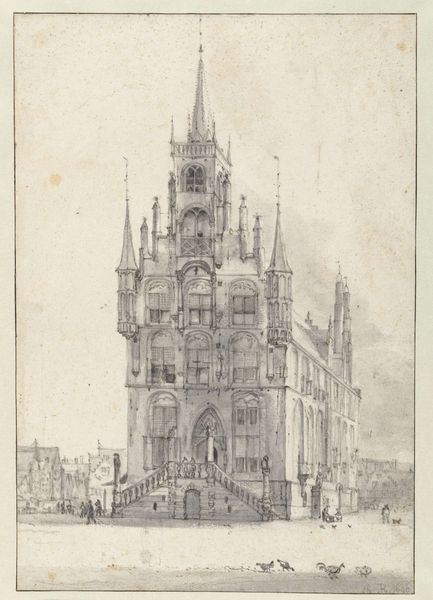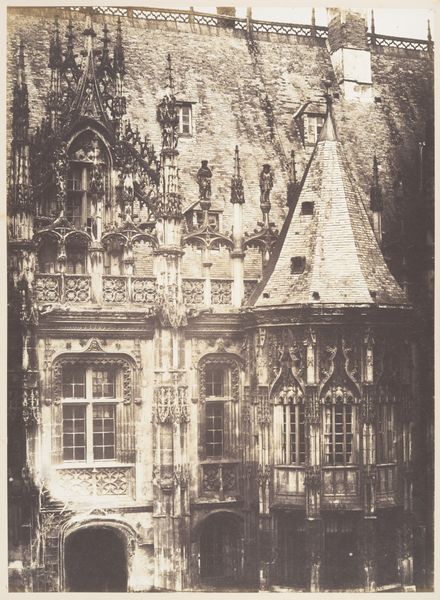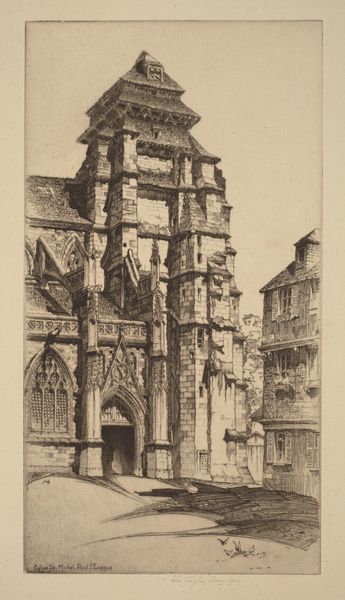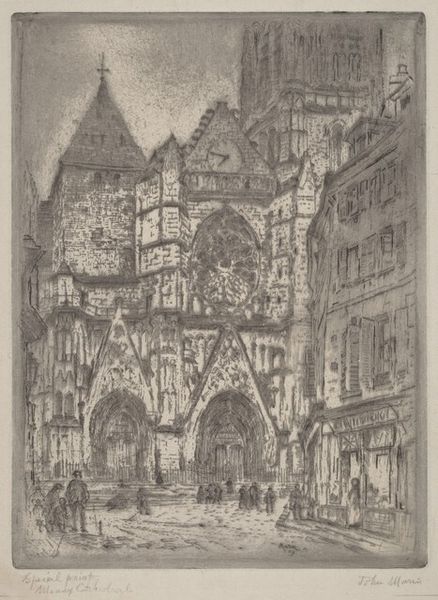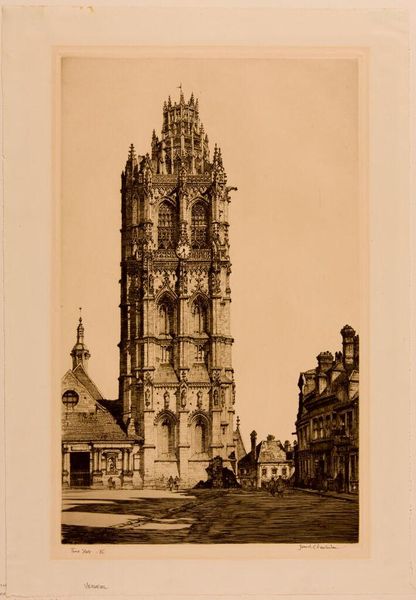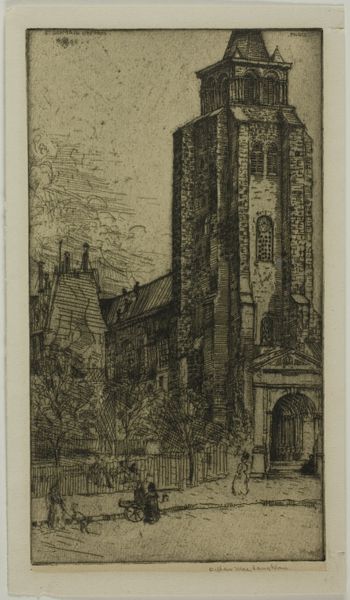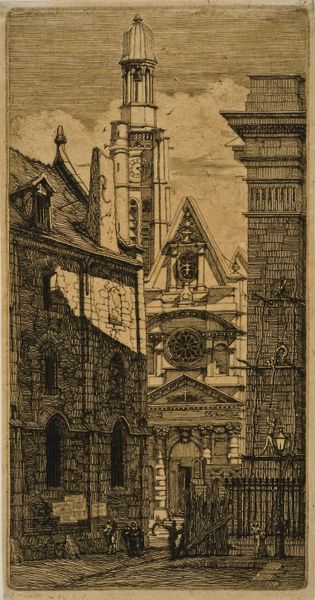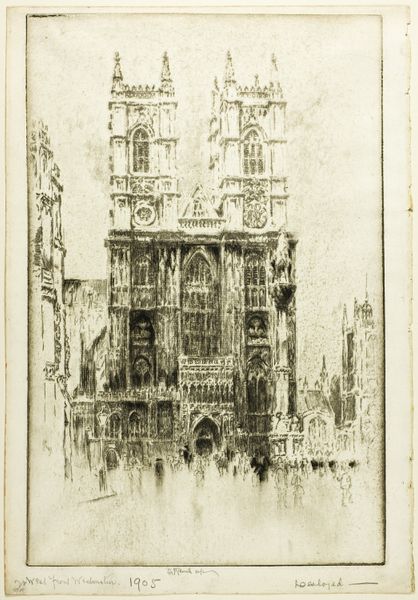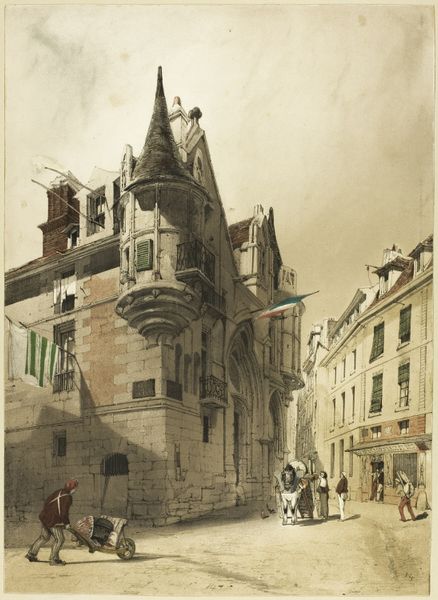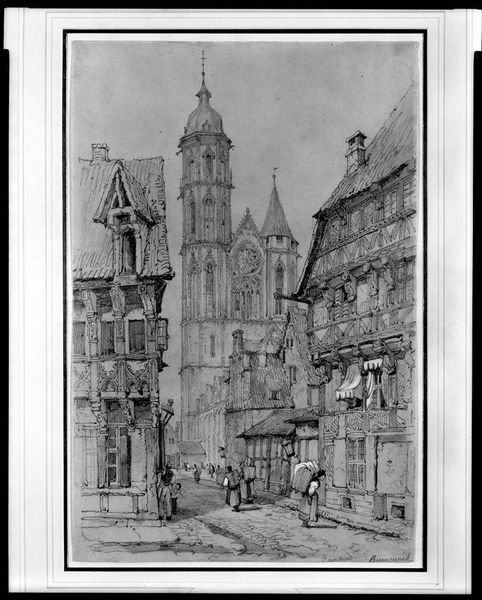
Copyright: CC0 1.0
Editor: Here we have Richard Parkes Bonington's "Tour du Gros Horloge, Evreux," housed at the Harvard Art Museums. It has such a detailed and almost dreamlike quality. What do you see in this piece? Curator: I am immediately struck by the clock tower, Gros Horloge, acting as a potent symbol of temporality and power. Clocks, historically, have been associated with control, order, and the measurement of human existence. What cultural memories does the image evoke for you? Editor: I hadn’t considered the clock's symbolism beyond just telling time. The people gathered around make it seem like the tower is the heart of the town. Curator: Precisely! The gathered people, seemingly in a bustling marketplace, underscore the clock's role as the regulator of daily life and social interaction. It invites us to reflect on how time shapes our experiences and collective identity. How does the tower's architecture reinforce that meaning? Editor: I see what you mean! The architecture is very complex, like time itself is not linear. Curator: A perfect observation. Time is not simple, and neither is the human experience. Thank you!
Comments
No comments
Be the first to comment and join the conversation on the ultimate creative platform.
